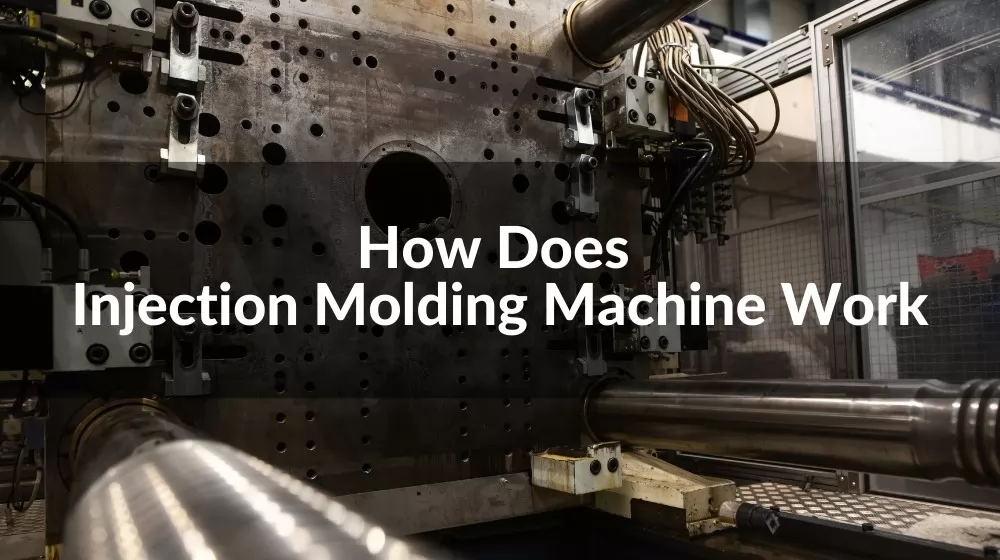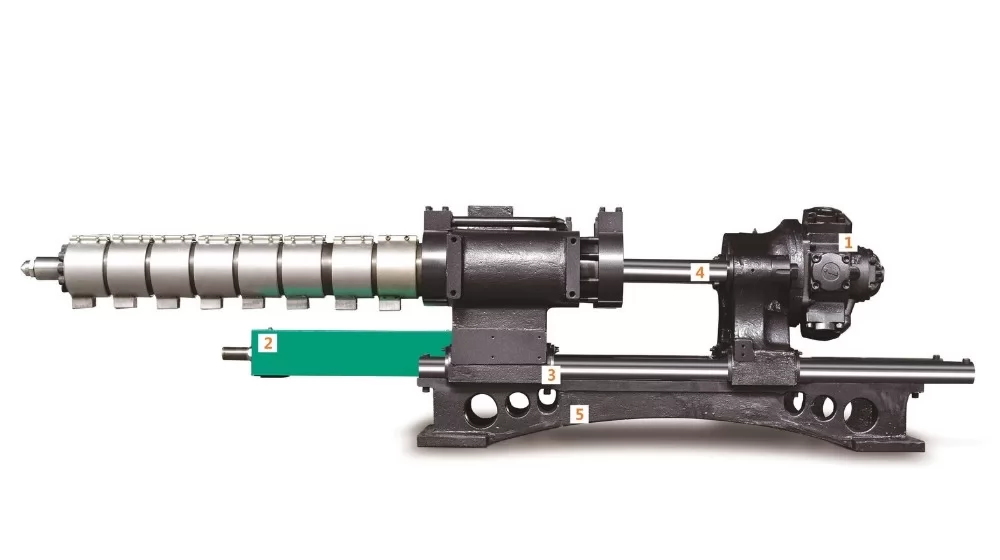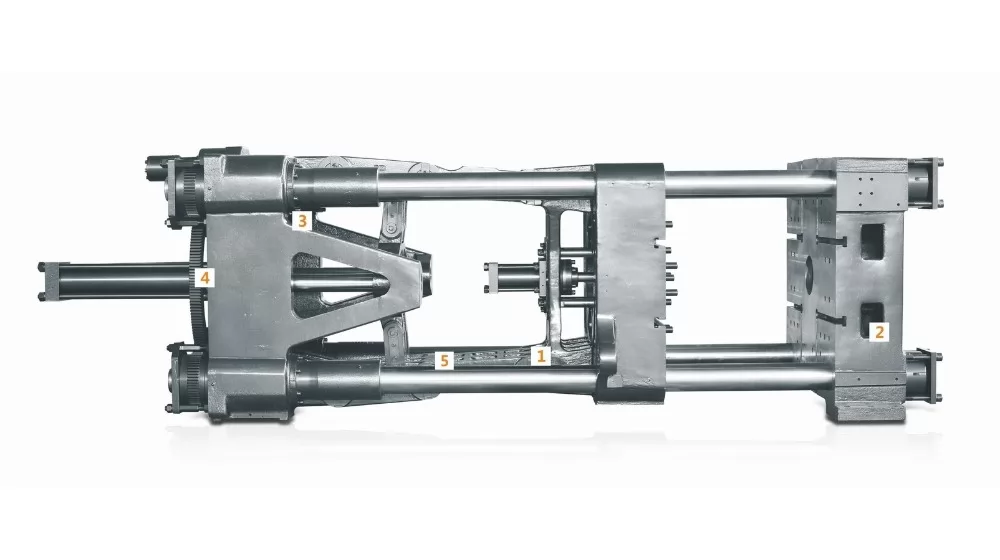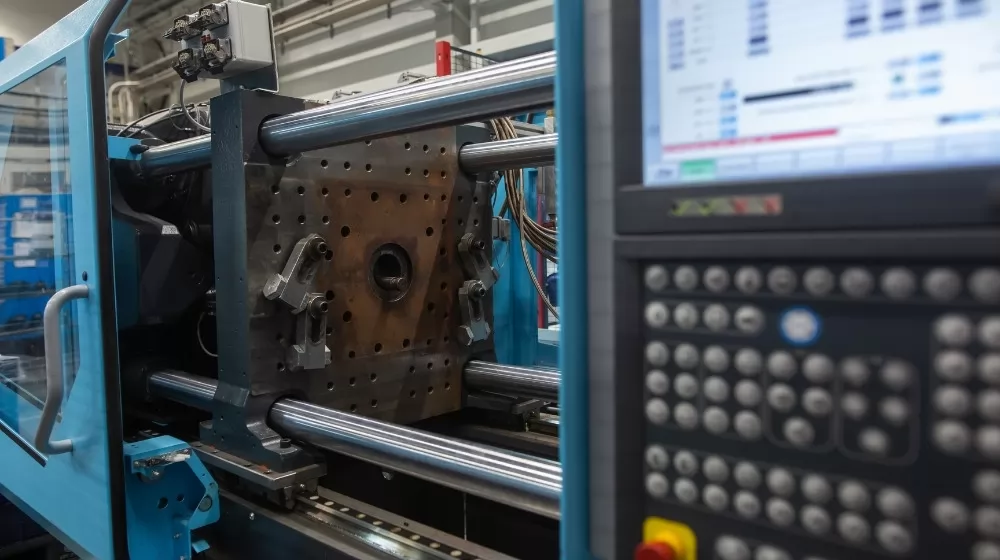
Dive into the intriguing world of Injection Molding Machines. As an essential part of numerous industries, these machines play a crucial role in manufacturing a wide variety of plastic parts and components. This comprehensive guide is designed to explain the working principle of injection molding machines, the core components, the molding process, and material considerations. Whether you're a seasoned professional or a curious novice, you'll find invaluable insights into how these remarkable machines operate.
1.Application of Injection Molding Machines
The ubiquity of plastic products in today's world owes a large part of its success to the Plastic Injection Molding Machine. From the buttons on your shirt to intricate components in electronic devices, to the caps of your favorite soft drink, injection molding machines play a pivotal role in manufacturing a wide variety of products.
Understanding the principle of the Injection Molding Machine helps comprehend its widespread application. The machine works on a simple principle: injecting molten plastic into a mold, cooling it until it solidifies, and then ejecting the final product. This method's efficiency and reliability make it a go-to technique for mass production of plastic items.
Hydraulic Injection Molding Machines have been the traditional choice in the industry due to their precision and power. However, as industries evolve and seek more sustainable and energy-efficient solutions, alternatives like all-electric and hybrid machines are gaining popularity.
Regardless of the type, injection molding machines find applications in various industries, including automotive, consumer goods, packaging, healthcare, and electronics, to name a few. The ability to produce intricate parts to precise specifications makes this technology a cornerstone of modern manufacturing.
2.Why Invest in Injection Molding Machines?
Investing in Plastic Injection Molding Machines presents a myriad of benefits for businesses, ranging from cost-efficiency to flexibility in design. Let's delve deeper to understand why it could be a valuable addition to your production line.
Firstly, injection molding machines offer high production output rates. Once the initial setup is complete, the Injection Molding Machine can produce large quantities of identical parts at a rapid pace. This high-efficiency level makes it an ideal solution for mass production.
Secondly, injection molding machines can create complex and intricate shapes with ease. The Injection Molding Machine Principle allows for the production of detailed and high-precision plastic parts that might be challenging and costly to produce using other methods.
Another advantage of injection molding machines is the wide range of plastic materials that can be used. Businesses have the flexibility to choose the material that best suits their product's needs and functionality.
Lastly, Hydraulic Injection Molding Machines and their electric counterparts are known for their durability. With proper maintenance, these machines can serve your production needs for many years, proving to be a worthwhile investment in the long run.
3.Explanation of the Fundamental Process of Injection Molding
Melting
The process begins with the feeding of plastic granules into the hopper of the Plastic Injection Molding Machine. These granules then move towards the heating unit, where they are melted into a liquid state. The heat applied is meticulously controlled to maintain the optimal viscosity for the molding process.
Injection
Once melted, the plastic is ready for injection. A large screw inside the Injection Molding Machine pushes the molten plastic into the mold. This process is based on the Injection Molding Machine Principle, and it happens under high pressure to ensure complete filling of the mold cavities.
Cooling
After injection, the cooling process begins. The plastic starts to solidify as it cools inside the mold. The cooling rate is carefully controlled to prevent deformities in the final product. Faster cooling rates can lead to uneven contraction, while slower cooling rates can affect the production speed.
Ejection
Once the plastic part has solidified completely, it's ready for ejection. The mold opens, and the part is ejected using ejector pins. The Hydraulic Injection Molding Machine then closes the mold, and the process repeats for the next cycle. The finished parts may require minimal post-processing before they are ready for use.
4.Types of Injection Molding Machines
Hydraulic Injection Molding Machines
Hydraulic Injection Molding Machines have been the industry standard for many years. They are known for their exceptional clamping force, making them suitable for producing large parts. However, these machines have higher energy consumption and may require more maintenance compared to other types.
Electric Injection Molding Machines
Electric machines operate using electric motors, making them highly energy efficient and quieter than their hydraulic counterparts. These machines also provide precise control, resulting in higher part quality and consistency. On the downside, electric machines might not be the best choice for molding larger parts due to limited clamping force.
Hybrid Injection Molding Machines
Hybrid Injection Molding Machines combine the best of both worlds. They utilize the precision of electric machines for injection and measurement tasks, while relying on the power of hydraulics for clamping and ejection. While hybrid machines can be a bit pricey, they offer a great balance of precision, power, and energy efficiency.
5.The Core Components of Injection Molding Machines
Overview of Key Components
The complexity and precision of Injection Molding Machines can be attributed to its key components. Understanding these core parts - the injection unit, the clamping unit, the hydraulic system, and the control system - is crucial in mastering the operation and maintenance of the machine.
The Injection Unit
The injection unit is where the plastic material is melted and then injected into the mold. It consists of components such as the hopper, where the plastic granules are fed, the screw or plunger, which pushes the molten plastic, and the heating elements that melt the plastic.
The Clamping Unit
The clamping unit holds and closes the mold during the injection process and opens it for ejection once the part has cooled and solidified. This unit ensures accurate alignment and consistent pressure for high-quality molding.
The Hydraulic System
In a Hydraulic Injection Molding Machine, the hydraulic system provides the power needed to operate the machine. It drives the injection and clamping units and helps maintain consistent pressure during the process.
The Control System
The control system is the brain of the machine. It regulates all machine functions, from the temperature and pressure settings to the timing of the injection and clamping cycles. Modern machines often have sophisticated control systems that enable precise control and diagnostics.
6.Understanding the Injection Unit
The Hopper: Where the Raw Plastic Material is Loaded
The injection process begins with the hopper, the part of the Injection Molding Machine where raw plastic material is loaded. The hopper typically contains a mixing device to blend the raw plastic material, ensuring uniformity in the final product.
The Barrel: Where the Material is Heated and Melted
After the plastic material is loaded into the hopper, it then moves into the barrel. The barrel is where the material is heated and melted to form a viscous fluid. This heating process is carefully managed to prevent degradation of the plastic, while ensuring it reaches the proper viscosity for injection.
The Nozzle: Where the Molten Plastic is Injected into the Mold
The nozzle is the final component of the injection unit. Once the plastic is melted in the barrel, it is pushed through the nozzle into the mold. The nozzle's design and temperature control are crucial to ensure a smooth flow of plastic and prevent clogging or premature cooling.

7.Deep Dive into the Clamping Unit
Explanation of the Clamping Unit's Function
The Clamping Unit is an integral part of an Injection Molding Machine. Its primary role is to open and close the mold and apply sufficient force to keep it closed during the injection and cooling processes. This pressure prevents the mold halves from separating under the intense pressure of the injected plastic. Consistent clamping force ensures accurate and high-quality final products.
Toggle Vs. Hydraulic Clamping
There are two main types of clamping systems: Toggle and Hydraulic. Toggle clamping utilizes mechanical levers to deliver force, often resulting in faster clamp movements, lower energy consumption, and higher accuracy. On the other hand, Hydraulic clamping provides smoother mold movements, greater flexibility in speed and pressure adjustments, and superior clamping force. The choice between the two typically depends on the specific requirements of the molding application.
Understanding the Process of Ejection
The ejection process is the final step in the molding cycle, where the finished part is pushed out from the mold. The ejection system, part of the clamping unit, must apply consistent and adequate force to eject the part without damaging it. Properly designed and controlled ejection systems ensure efficiency and reduce the risk of product defects, contributing to the overall productivity of the Injection Molding Machine.

8.The Hydraulic System & Its Significance
How the Hydraulic System Powers the Machine
The hydraulic system of an Injection Molding Machine provides the necessary power to move and control the machine's mechanical components. This system uses pressurized hydraulic fluids to transmit power throughout the machine, enabling the precise movements of the injection and clamping units. By finely tuning the pressure and flow rates, the hydraulic system allows for smooth, accurate, and efficient operations.
Comparison of Hydraulic Systems in Different Types of Injection Molding Machines
Hydraulic systems are predominant in traditional injection molding machines, providing high clamping forces and flexibility in operations. Modern machines, including electric and hybrid machines, have seen a reduction in their reliance on hydraulic systems, with some eliminating them entirely. The choice between these systems often depends on factors such as energy efficiency, speed, precision, and the specific requirements of the molding process.
Hydraulic System VS Electric System
While hydraulic systems provide robust and flexible power transmission, they can be less energy-efficient and slower compared to electric systems. Electric injection molding machines, on the other hand, offer high precision, speed, and energy efficiency but may struggle with larger, more complex molds that require high clamping forces. The choice between a hydraulic or electric system often comes down to the specific needs of the application.
More Reading: Electric VS Hydraulic Injection Molding Machine
9.Exploring the Control System
The Role of the Control System in Monitoring and Managing Operations
The control system is the brain of the Injection Molding Machine. It monitors all aspects of the machine's operations, from the initial feeding of raw material to the final ejection of the molded part. The control system manages the precise movements of the injection and clamping units, the temperature and pressure conditions in the barrel, and the hydraulic and electric power systems. It plays a critical role in ensuring the consistency, accuracy, and quality of the molding process.
How Modern Advancements in Technology Impact Control Systems
Modern advancements in technology have significantly impacted the control systems in injection molding machines. The incorporation of computerized and AI-based systems has led to higher precision, improved efficiency, and better quality control. Advanced sensors, predictive maintenance tools, and real-time data analytics have further enhanced the capabilities of these control systems, making them more responsive and adaptive to changing conditions in the molding process. The future of Injection Molding Machines lies in the continuous integration of these advanced technologies into their control systems.
10.The Process of Molding
Importance of Molding
Molding is a crucial process in the manufacturing industry, allowing the creation of complex plastic parts in high volumes with exceptional precision and repeatability. It's a central function of the Injection Molding Machine and influences the final product's quality, consistency, and production cost.
Preparing the Plastic Material
The molding process begins with the preparation of the plastic material. This typically involves drying the material to remove moisture and feeding it into the hopper of the machine. The material is then conveyed into the barrel where it is heated to a specific melting point.
Melting and Injection
In the barrel, the plastic material melts under controlled temperature and pressure conditions. The molten plastic is then injected into the mold cavity using a reciprocating screw or a ram injector. The goal is to fill the mold cavity completely and uniformly without causing defects.
Cooling and Hardening
Once the mold cavity is filled, the molten plastic begins to cool and harden, taking the shape of the mold. The cooling time is carefully managed to ensure optimal part quality and to prevent deformations or shrinkage.
Ejection and Finishing
After the plastic part has solidified, it is ejected from the mold using pins or compressed air. The part may then undergo additional finishing processes such as trimming, painting, or assembly, depending on the application. Quality control checks are also performed at this stage to ensure the part meets all required specifications.

11.Material Considerations in Injection Molding
Understanding the Importance of Material Selection
Material selection is a critical aspect of the injection molding process. The properties of the material, such as its melting point, flow rate, and shrinkage, greatly influence the quality of the molded parts. Furthermore, the material's performance under different environmental conditions, its chemical resistance, and its mechanical strength are all essential considerations when choosing the right material for a specific application. A proper understanding of the material's properties can significantly improve the Injection Molding Machine operation and enhance the final product's performance.
How Different Materials Affect the Molding Process
Different materials have varied effects on the molding process. For instance, thermoplastic materials, like polystyrene, are known for their ease of molding and cost-effectiveness, making them suitable for producing high-volume parts. In contrast, thermosetting plastics, such as epoxy resins, offer superior chemical and heat resistance, but they require specific molding conditions. Some materials may also need additional treatments, such as drying, before molding to achieve optimal results. Hence, understanding how different materials behave under the molding process is fundamental for successful injection molding.
Choose the Best Injection Molding Machine Manufacturer
Selecting the right Injection Molding Machine Manufacturer is a pivotal decision that can make or break your project. You're not just buying a machine; you're investing in a partner that will support your business growth and success. When making this important choice, consider the following aspects:
Technical Expertise and Innovation
The manufacturer should have a deep understanding of injection molding technology and consistently innovate to improve their machines' performance, efficiency, and reliability. Look for a manufacturer who invests in R&D and stays at the forefront of industry advancements.
Quality and Durability
The quality and durability of the machines are crucial. Make sure the manufacturer uses high-quality materials and components, follows rigorous quality control processes, and builds machines that can withstand the demands of high-volume production.
Service and Support
Service and support are often overlooked but are equally important. The manufacturer should provide excellent pre-sale and after-sale support, including machine installation, operator training, maintenance, troubleshooting, and spare parts supply. They should be responsive and help you resolve any issues quickly to minimize downtime.
Reputation and References
Last but not least, the manufacturer's reputation matters. Check their customer testimonials and case studies, and reach out to their references if possible. A reputable manufacturer will have a track record of satisfied customers and successful projects.
By carefully considering these factors, you can choose a Injection Molding Machine Manufacturer that aligns with your business needs and can contribute significantly to your manufacturing success.
More Reading: How to select a Plastic Injection Molding Machine
Final Thoughts
Understanding the functionality of an Injection Molding Machine is pivotal in ensuring you maximize its potential and your manufacturing process's efficiency. As you've seen, there are numerous aspects to consider, from the type of machine to the material used in the molding process. If you're seeking a top-quality Injection Molding Machine Manufacturer or injection molding solutions, look no further than Log Machine. With our in-depth industry knowledge and cutting-edge technology, we are dedicated to providing you with high-quality, reliable machines that will elevate your production capabilities. Visit us at www.log-machine.com to learn more about our solutions.
Read More:
How to select a Plastic Injection Molding Machine
Top 10 Injection Molding Machine Manufacturer in World(2023 Updated)
2023 Top 30 China Injection Molding Machine Manufacturer Brands: Ultimate List
Electric VS Hydraulic Injection Molding Machine
Injection Molding Machine Maintenance: What You Need to Know




